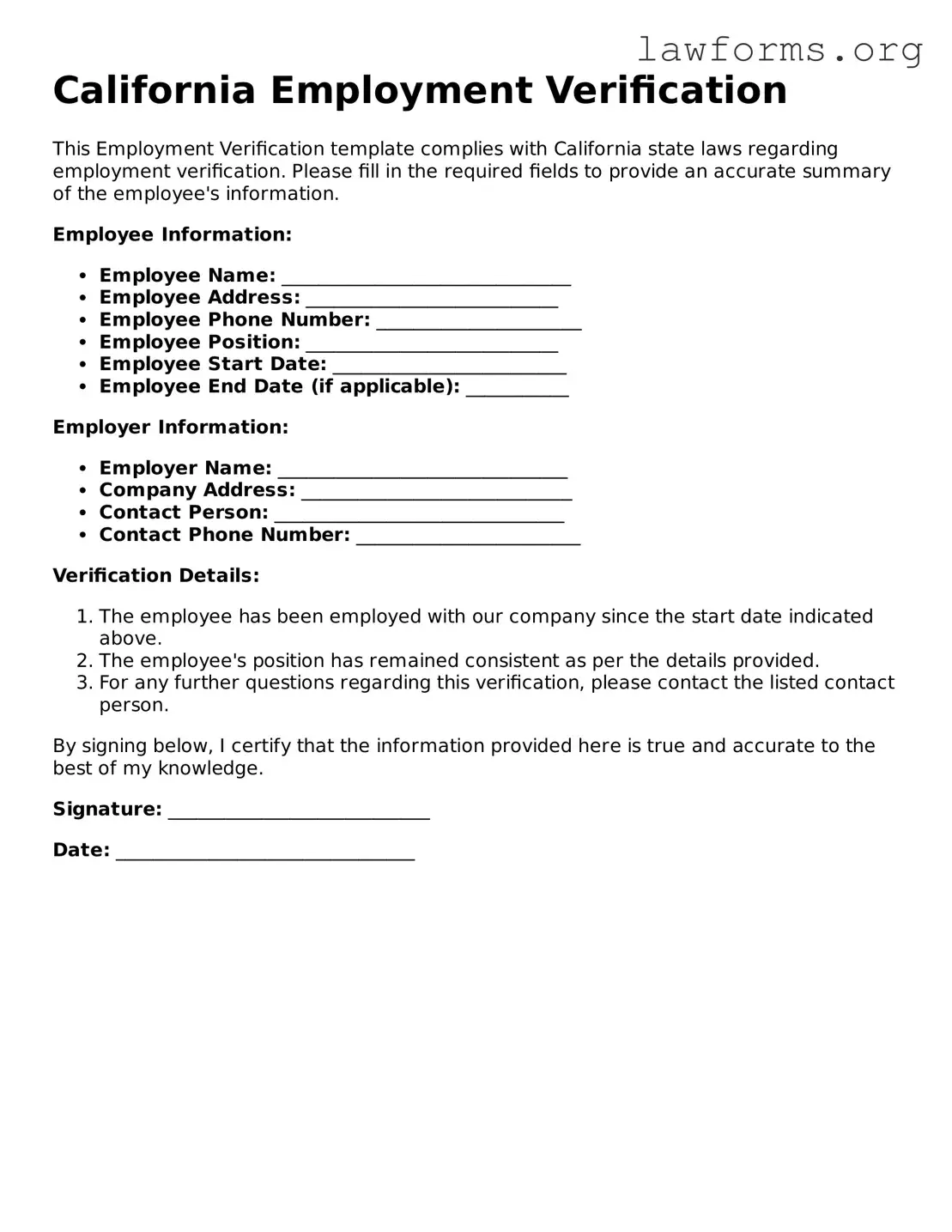California Employment Verification
This Employment Verification template complies with California state laws regarding employment verification. Please fill in the required fields to provide an accurate summary of the employee's information.
Employee Information:
- Employee Name: _______________________________
- Employee Address: ___________________________
- Employee Phone Number: ______________________
- Employee Position: ___________________________
- Employee Start Date: _________________________
- Employee End Date (if applicable): ___________
Employer Information:
- Employer Name: _______________________________
- Company Address: _____________________________
- Contact Person: _______________________________
- Contact Phone Number: ________________________
Verification Details:
- The employee has been employed with our company since the start date indicated above.
- The employee's position has remained consistent as per the details provided.
- For any further questions regarding this verification, please contact the listed contact person.
By signing below, I certify that the information provided here is true and accurate to the best of my knowledge.
Signature: ____________________________
Date: ________________________________
